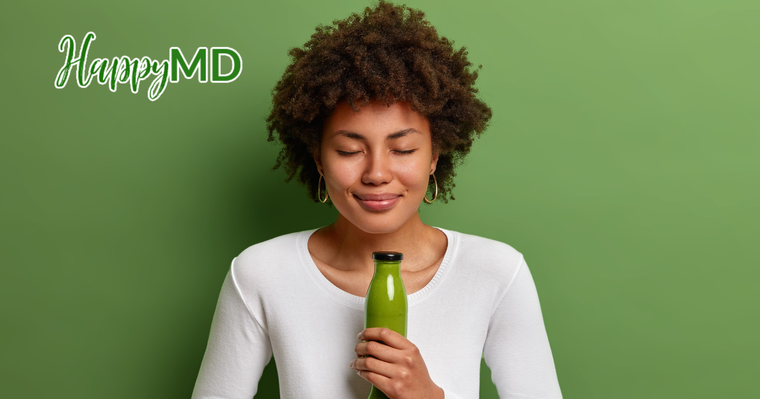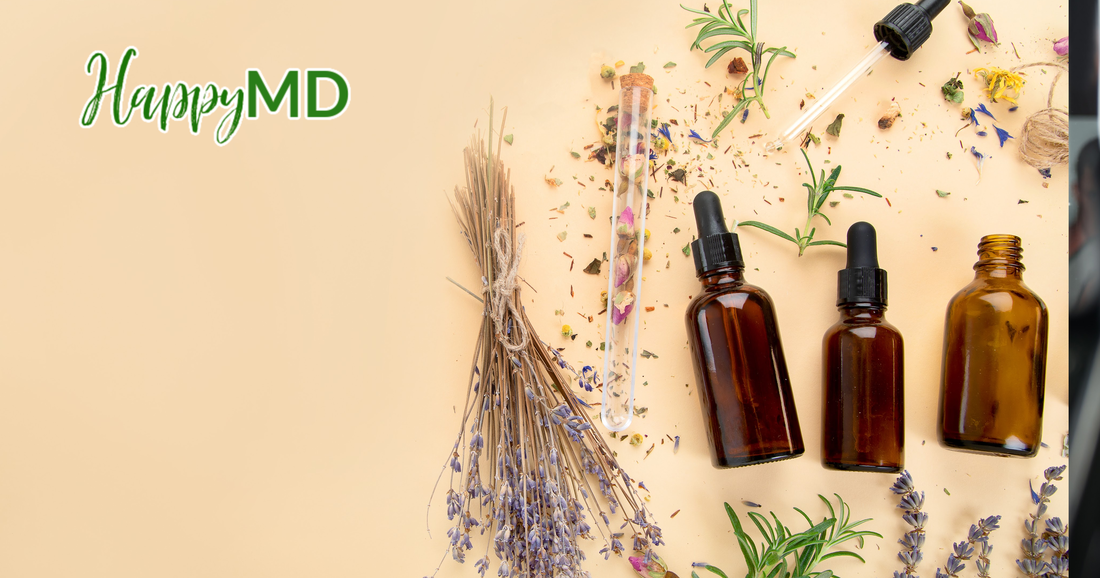
Is Marijuana an Antioxidant?
Statistics reveal an increase in the number of CBD and marijuana researches in the past years. The surge in the number of researches has led to an increase in recognition of the potential health, physical, and psychological benefits of this plant-based and natural remedy.
Despite many individuals opposing the use of marijuana as an alternative medical therapy, the proponents believe that cannabis is becoming essential in alleviating various conditions or diseases. In addition, some individuals still believe that marijuana can act as preventative medicine. You can use the components or compounds to enhance your health and prevent debilitating symptoms of severe diseases.
Experts attribute the numerous benefits of this natural medicine remedy to its derivatives, such as flavonoids, cannabinoids, and terpenes. Studies show that these compounds or components have numerous positive actions on your body. The anti-inflammatory, antioxidant, and neuroprotective properties enhance these substances' benefits to the human body and alleviate various conditions.
This article explores the antioxidant properties of marijuana. Furthermore, reading the post will help you understand how marijuana’s antioxidant properties can enhance your health and wellness.
What is an Antioxidant?
Researchers have revealed that marijuana is full of antioxidant properties. However, before diving deep into how this natural medicine remedy acts as an antioxidant, it’ll be wise to understand what an antioxidant means. An antioxidant is a common name that most individuals use when discussing different topics. The word features the most common topic when discussing the effects of healthcare products or specific foods. Despite commonly using this term in their discussion, few individuals understand the exact meaning of this term.
Antioxidants refer to special compounds protecting the human body from oxidative stress. Oxidative stress is a unique body situation where particular molecules, reactive oxygen species, start building up in your body.
Experts sometimes refer to the reactive oxygen species as free radicals, as the body cells naturally produce these oxygen-containing and highly reactive molecules. Remember, these free radicals are vital in our bodies, as they are critical in enhancing various psychological functions, such as supporting the immunity system. These molecules enhance the body’s immunity by working as a special chemical signal. The immune system or the body releases this chemical signal when it senses an infection. After releasing the chemical signal, it helps to break down or destroy the infected cells.
Nevertheless, these reactive oxygen species could result in potential adverse effects. Once the molecules get out of control, they can result in activities or processes that harm your healthy body cells. Studies show that these molecules can damage the DNA, lipids, and proteins.
Remember, the body can control the level of these molecules to prevent adverse effects. For instance, your body can manage ROS levels under normal circumstances by manufacturing natural oxidants. We’ve got a wide list of natural antioxidants the body produces to manage the ROS levels. Below are the common or popular naturals antioxidants the body produces:
● Catalase (CAT)
● Superoxide dismutase (SOD)
● Glutathione peroxidase (GPx)
After the production, these molecules will interact freely with the reactive oxygen species. The interactions minimize the adverse harm or effects they could cause on the body cells by making them less reactive. Studies reveal that making these molecules less reactive enhances their functionality and reduces their adverse effects on the different body cells. Nevertheless, oxidative stress will occur if your body fails to generate enough antioxidants to control or minimize the ROS effects.
Research shows that oxidative stress is a common and dangerous complication. Thus, most healthcare experts recommend that you include additional antioxidants in your meal or diet plans to alleviate your body from the condition. The best sources of antioxidants include Vitamin E and Vitamins C. Furthermore, you can also find flavonoids in natural herbs, and fruits are also another good source of antioxidants.
How Can Antioxidants Help to Prevent Disease?
Oxidative stress renders your body and immune system vulnerable. For instance, you risk developing various chronic and severe conditions when your body is under oxidative stress, as the condition may impact your immune system. Below are some of the common conditions that result due to oxidative stress:
● Diabetes
● Cancer
● Metabolics disorder
● Heart complications or disease
● Atherosclerosis - narrowing and hardening of your arteries
● Alzheimer’s disease
● Parkison’s disease
● Depression
● Kidney disease
● Rheumatoid arthritis
Studies show that age increases the risk of developing oxidative stress due to compromised body systems. Oxidative stress is a key player in the aging process. However, you can slow your aging by reducing exposure to this condition. It'll be wise to understand how to reduce or avoid the different factors that can stimulate or induce oxidative stress. Let’s look at the factors that may induce oxidative stress:
● Radiation
● Cigarette smoke
● Environmental toxins such as heavy metals, solvents, pollutants, etc
● Certain medications or drugs
● Smoked meats
● Ultraviolet rays
● Used fats and oils
● Emotional stress
● Excessive exercise
From the above list, some factors are indeed easier to avoid or control than others. Therefore, providing your body with support or helping hands will be vital to avoid these factors. You can support your body or system by including enough antioxidants in your meals.
Like antioxidants from the body system, the antioxidants your body receives from your diet or meals will be essential to act on the ROS. The reaction with the ROS makes it more stable and reduces its ability to cause damage or affect various body systems. Therefore, including natural antioxidants in your meals will help control oxidative stress, which helps to reduce the risk of developing infections or diseases.

Is Cannabis an Antioxidant?
Studies reveal that most plants, including marijuana, contain numerous antioxidant compounds. However, the number of compounds or antioxidants in these plants will vary. Most of marijuana’s antioxidant effects result from the plants' flavonoids, terpenes, and cannabinoids. Below is a detailed analysis of the above marijuana compounds with antioxidant effects.
Cannabinoids
Currently, researchers have identified more than 100 cannabinoids present in marijuana. Despite the numerous cannabinoids, cannabidiol (CBD) and delta-9-tetrahydrocannabinol (THC) are the popular ones that scientists have carried out rigorous testing to check their compositions and properties.
Experts reveal that THC is the most popular chemical in marijuana. This chemical or cannabinoid offers a wide range of functions, such as intoxicating effects. Nevertheless, over the past years, CBD has gained numerous attention due to its vast potential health benefits. Most studies reveal that CBD offers a wide range of properties like neuroprotectant, anti-inflammatory, and powerful antioxidants.
Understanding the Comparison Between THC and CBD
CBD and THC are the prominent cannabinoids in marijuana. Despite coming from the same marijuana plants, these components have different properties and functionality. Let’s look at the comparison between these prominent cannabinoids:
In 2000 researchers conducted a study and published the finding in the ‘Annals of New York Academy of Sciences.’ The findings revealed that CBS and THC contained a wide range of potent antioxidant effects. Despite having antioxidant effects, the researchers concluded that CBD had numerous more beneficial antioxidants than THC. The authors revealed that cannabidiols appeared more effective as an antioxidant than vitamins E and C.
Flavonoids
Experts refer to flavonoids as phenolic compounds. These compounds are a class of chemicals present in various natural plants such as marijuana, tea, herbs, fruits, and vegetables. Based on recent studies, scientists have discovered more than 8000 phenolic compounds, most containing flavonoids.
Studies show that these flavonoids can act as indirect and direct antioxidants. Due to their antioxidant properties, the body can also use these substances to stabilize ROS. Flavonoids have the ability to reduce the production of ROS in the body.
Marijuana contains more than 20 different flavonoids. Cannfavain A and B are the common flavonoids that have unique properties on this extraordinary plant. Besides the anti-inflammatory properties and other benefits, these compounds also produce potent anti-inflammatory effects.
Terpenes
Besides cannabidiols and flavonoids, terpenes are another common chemical in numerous plants, including cannabis. Studies show that plants contain different contents or levels of this chemical. These chemicals are aromatic compounds you can derive from any plants they’re in. Studies show that terpenes are vital in protecting drops or plants from pest attacks, making the crop pest and disease-free. Furthermore, they also provide different plants with attractive and characteristic flavors or aromas.
Marijuana also contains a wide range of terpenes, which offers significant advantages or benefits to the human body. Experts reveal that linalool, pinene, limonene, and myrcene are common terpenes in marijuana. These components provide numerous benefits to the marijuana plant. For instance, terpenes enhance the marijuana smell and make the products taste great. Furthermore, this component provides numerous health benefits, including antioxidant properties.
In 2018 researchers conducted a study on terpenes in marijuana and published it in the ‘Cannabis and Cannabis Research.’ The research revealed that cannabis contained numerous terpenes. These terpenes have a wide range of antioxidant properties and effects. Despite containing numerous terpenes, no terpenes were as potent or strong as CBD after the testing.
Using Cannabis as an Antioxidant
Antioxidants are vital in the body to counter the adverse effects of oxidative stress. Experts consider marijuana a natural source of antioxidants. With the numerous antioxidant effects in marijuana, there are various steps you must take to maximize their effects on the body. The first step is to choose the best marijuana strain, preferably rich in CBD. Remember, these days, manufacturers bred more strains to contain high THC content, with few having high CBD content. Nevertheless, choosing a train rich in CBD will be beneficial, as it offers the best results with fewer adverse effects.
Below are some of the popular CBD-rich marijuana strains you can consider:
● ACDC
● Charlotte’s Web
● Cannatonic
● Ringo’s Gift
● Harlequin
Besides choosing a proper strain rich in CBD, it’ll also be vital to understand the appropriate way of consuming marijuana products.
Studies link smoking to increased oxidative stress. It’s common when you combine tobacco and cannabis during the smoking session. Therefore, smoking may not be the optimal or best way of consuming marijuana to enhance its antioxidant properties. Smoking marijuana may also result in intense heat, which may destroy the vital benefits of your product.
Thus, choosing an effective alternative from the numerous available consumption methods will be wise. These alternative methods to consume marijuana include vaping, concentrates, tinctures, and edibles. Remember to set your vaporizer to the appropriate temperature if you choose to vape the cannabis. Setting the temperature prevents the heat from destroying beneficial properties, such as terpenes and cannabinoids.
Lastly, consider the marijuana plant part you’re going to use. Despite marijuana having more terpenes and cannabinoids in the female marijuana buds, you can find flavonoids throughout the entire plant. Thus, you’ll find and enjoy terpenes by consuming whole plant parts, including the male and female specimens’ stems and leaves.
Thus, experts advise that you use every part of your marijuana plant after harvesting. Utilizing all the parts of your marijuana plant after harvesting allows you to maximize its benefits and properties. Remember, despite not having an intoxicating effect; you can use the marijuana stems and leaves to create juices, smoothies, tea, and salad. These parts ensure that you get a healthy and adequate antioxidant dose daily.
Final Thoughts on Marijuana as an Antioxidant
Marijuana is an essential plant with a wide range of physical, health, and psychological benefits, such as antioxidant properties. Studies reveal that this plant derives these benefits from a wide range of compounds, such as flavonoids, terpenes, and cannabinoids. These compounds offer an appropriate and dramatic influence on the whole body system.
Nevertheless, with numerous strains available, it’ll be vital to consider the appropriate one for your needs. Choosing the best cannabis strains(preferably with high CBD content) and understanding the best way to consume them will help you achieve the most benefits from your marijuana therapy. You can also maximize the positive impacts of marijuana by utilizing the entire plant, including the leaves, stems, and buds.
Besides getting ‘high,’ studies show numerous benefits you can get from cannabis. Remember, the current research on the benefits of marijuana is just the tip of the iceberg. Thus, cannabis offers an excellent alternative to adding or incorporating more antioxidants into your routine or lifestyle.


.png)